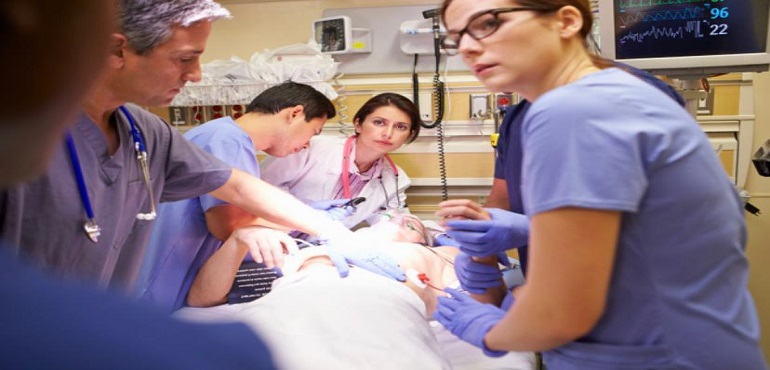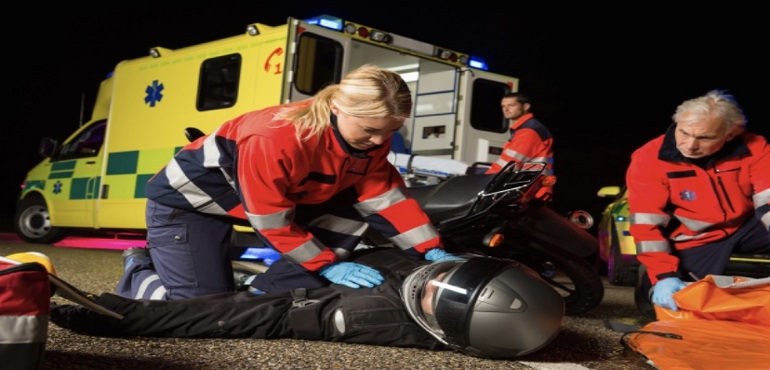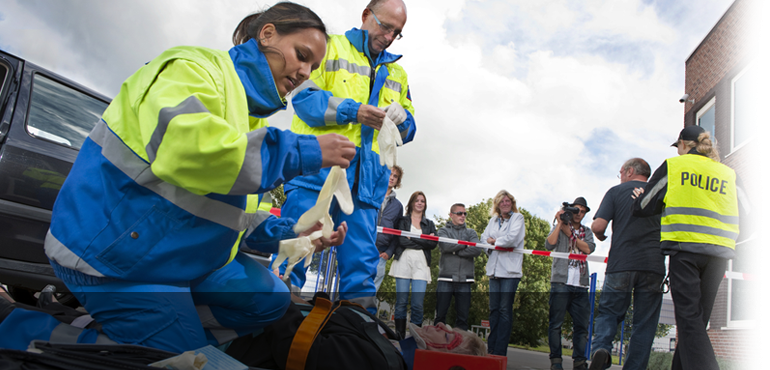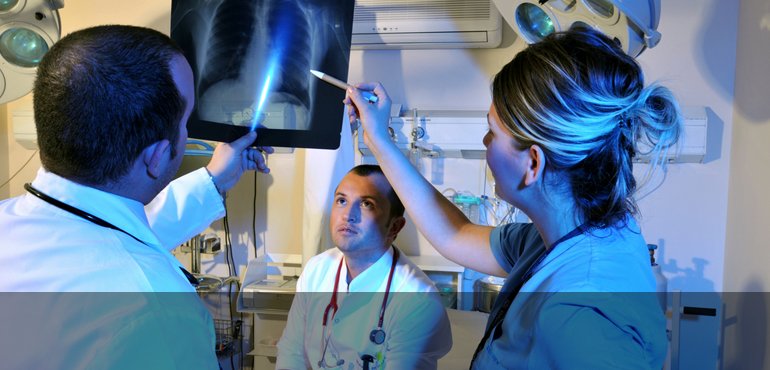| Toll Free : 1844 495 7333(injury hotline- new cases only) | |
| Text a Personal Injury Lawyer 24/7 and get instant help.TM (416 931 5015) | |
| Head Office : 905 495 7333 |
Pelvic Fractures and Auto Accidents: An Overview
October 26, 2015The pelvis is a butterfly shaped structure situated at the base of the spine. It is composed of five major pelvic bones and bone-systems which together house major organs of digestion, excretion and reproduction of the human body. All these bones are held together by a tough band of ligaments and this forms the pelvis. The pelvis has a large hole in the middle and this forms one major outer ring structure, while two smaller rings protect the bladder, rectum and intestines.
Pelvic Fractures
Breaks in one or more of the bones in this structure, including the hip joints, constitute a pelvic fracture. They are not very common since the structure is quite strong and well-protected by tissue, muscles and fat. However, serious accidents, impact injuries and falls can cause damage to the bones. Fractures range from mild (minor rings are affected) to severe (rings break in more than one place.)
Pelvic fractures are classified as:
Stable: in which there is a break only in one place along the ring, with limited bleeding and the structure remains in place.
Unstable: in which there are multiple breaks and moderate to heavy bleeding, endangering the stability of the structure.
Both these may either be open or closed fractures in which the skin may or may not be broken. Mild fractures may set on their own with adequate rest, whereas serious fractures can endanger the person’s life, lead to organ damage and needs emergency medical attention with long-term hospitalization and care.
Other systems of classification like the Young-Burgess classification segregate pelvic fractures into Types A, B and C, based on location, compression and shear.
Internal bleeding may occur, which may not be immediately obvious. In case of car accidents, victims with pelvic fractures may initially be able to walk around unaided but it should not mislead the physicians/ER staff.
Symptoms
- Severe pain in the abdominal region, groin, hip or lower back
- Inability to walk
- Numbness, tingling in groin and/or legs
- Bleeding from rectum, urinary tract or vagina
- Difficulty in urinating
- Difficulty in having bowel movements
- Pain and tenderness in the hip area
- Bruising and swelling
- Shock
Diagnosis
Following a severe car accident, care should be taken to examine all passengers thoroughly, though they may appear unscathed. Mild pelvic fractures may not present with obvious symptoms, but can lead to serious problems if left untreated. It’s also important to check if the patient is a pregnant woman, as this could lead to life-threatening problems for both mother and child.
Diagnosis is achieved via:
- Observation and examination
- Patient interview/report
- Range of motion of hip
- X-ray
- CT Scan (doctor should be informed about allergies if any to dyes)
The doctor may recommend certain other investigations to confirm the diagnosis. These include:
- Urinalysis
- Pregnancy test for women of child-bearing age
- Hematocrit and hemoglobin tests for assessing blood loss on a serial basis
- Ultra-sound to detect bleeding in pelvic region
- Urethrography
- Arteriography
- Cystography
The last three tests are to identify the location and type of bleeding.
Treatment and Management
Mild and stable fractures require:
- Pain-relief medication
- Bed-rest for a specific period followed by supervised mobility
- Avoidance of weight-bearing
- Use of crutches/walker
- Anti-coagulation medications
Severe and unstable fractures require:
- Careful initial intervention, especially at accident sites
- Straight lift of patient on to stretcher without rolling by several helpers
- Blood transfusions
- Fluid resuscitation for treatment of shock
- Immediate surgery with insertion of rods/pins to stabilize the structure
- External fixation of structure with rods, blades, screws etc
- Open fractures need emergency treatment to avoid blood loss
- Colostomy for open fractures
- Further hospitalization should be monitored by orthopedic specialists
- Early fixation of unstable fractures, essential to avoid deformity
- Multi-disciplinary approach
How We Can Assist
Pelvic fractures caused by a devastating car accident can change a victim’s life forever. Apart from the statutory benefits mandated by the government, if the accident was caused by the negligence or fault of another person, our no win no fee lawyers can help file a lawsuit for damages.
Our catastrophic injury lawyers can assess the facts of the case and give you a genuine assessment of whether your claims are valid or not. Victims/families are so traumatized by the events following an accident that they may inadvertently compromise their rights or give recorded statements that could be counter-productive to their claims later.
Our car accident lawyers work to safeguard your rights and ensure you receive maximum compensation.
If you, your family or a friend has been injured in an accident, please feel free to speak to one of our injury lawyers for a free consultation about how we are able to assist in making a personal injury claim. We consult in all cities across Ontario with a no win no fee guarantee. Our personal injury lawyers have helped victims secure millions of dollars in personal injury cases. Call us Toll Free On our 24/7 Injury Hotline: 1 – 844 495 7333.
Pelvic Fractures and Auto Accidents: An Overview
October 26, 2015The pelvis is a butterfly shaped structure situated at the base of the spine. It is composed of five major pelvic bones and bone-systems which together house major organs of digestion, excretion and reproduction of the human body. All these bones are held together by a tough band of ligaments and this forms the pelvis. The pelvis has a large hole in the middle and this forms one major outer ring structure, while two smaller rings protect the bladder, rectum and intestines.
Pelvic Fractures
Breaks in one or more of the bones in this structure, including the hip joints, constitute a pelvic fracture. They are not very common since the structure is quite strong and well-protected by tissue, muscles and fat. However, serious accidents, impact injuries and falls can cause damage to the bones. Fractures range from mild (minor rings are affected) to severe (rings break in more than one place.)
Pelvic fractures are classified as:
Stable: in which there is a break only in one place along the ring, with limited bleeding and the structure remains in place.
Unstable: in which there are multiple breaks and moderate to heavy bleeding, endangering the stability of the structure.
Both these may either be open or closed fractures in which the skin may or may not be broken. Mild fractures may set on their own with adequate rest, whereas serious fractures can endanger the person’s life, lead to organ damage and needs emergency medical attention with long-term hospitalization and care.
Other systems of classification like the Young-Burgess classification segregate pelvic fractures into Types A, B and C, based on location, compression and shear.
Internal bleeding may occur, which may not be immediately obvious. In case of car accidents, victims with pelvic fractures may initially be able to walk around unaided but it should not mislead the physicians/ER staff.
Symptoms
- Severe pain in the abdominal region, groin, hip or lower back
- Inability to walk
- Numbness, tingling in groin and/or legs
- Bleeding from rectum, urinary tract or vagina
- Difficulty in urinating
- Difficulty in having bowel movements
- Pain and tenderness in the hip area
- Bruising and swelling
- Shock
Diagnosis
Following a severe car accident, care should be taken to examine all passengers thoroughly, though they may appear unscathed. Mild pelvic fractures may not present with obvious symptoms, but can lead to serious problems if left untreated. It’s also important to check if the patient is a pregnant woman, as this could lead to life-threatening problems for both mother and child.
Diagnosis is achieved via:
- Observation and examination
- Patient interview/report
- Range of motion of hip
- X-ray
- CT Scan (doctor should be informed about allergies if any to dyes)
The doctor may recommend certain other investigations to confirm the diagnosis. These include:
- Urinalysis
- Pregnancy test for women of child-bearing age
- Hematocrit and hemoglobin tests for assessing blood loss on a serial basis
- Ultra-sound to detect bleeding in pelvic region
- Urethrography
- Arteriography
- Cystography
The last three tests are to identify the location and type of bleeding.
Treatment and Management
Mild and stable fractures require:
- Pain-relief medication
- Bed-rest for a specific period followed by supervised mobility
- Avoidance of weight-bearing
- Use of crutches/walker
- Anti-coagulation medications
Severe and unstable fractures require:
- Careful initial intervention, especially at accident sites
- Straight lift of patient on to stretcher without rolling by several helpers
- Blood transfusions
- Fluid resuscitation for treatment of shock
- Immediate surgery with insertion of rods/pins to stabilize the structure
- External fixation of structure with rods, blades, screws etc
- Open fractures need emergency treatment to avoid blood loss
- Colostomy for open fractures
- Further hospitalization should be monitored by orthopedic specialists
- Early fixation of unstable fractures, essential to avoid deformity
- Multi-disciplinary approach
How We Can Assist
Pelvic fractures caused by a devastating car accident can change a victim’s life forever. Apart from the statutory benefits mandated by the government, if the accident was caused by the negligence or fault of another person, our no win no fee lawyers can help file a lawsuit for damages.
Our catastrophic injury lawyers can assess the facts of the case and give you a genuine assessment of whether your claims are valid or not. Victims/families are so traumatized by the events following an accident that they may inadvertently compromise their rights or give recorded statements that could be counter-productive to their claims later.
Our car accident lawyers work to safeguard your rights and ensure you receive maximum compensation.
If you, your family or a friend has been injured in an accident, please feel free to speak to one of our injury lawyers for a free consultation about how we are able to assist in making a personal injury claim. We consult in all cities across Ontario with a no win no fee guarantee. Our personal injury lawyers have helped victims secure millions of dollars in personal injury cases. Call us Toll Free On our 24/7 Injury Hotline: 1 – 844 495 7333.








